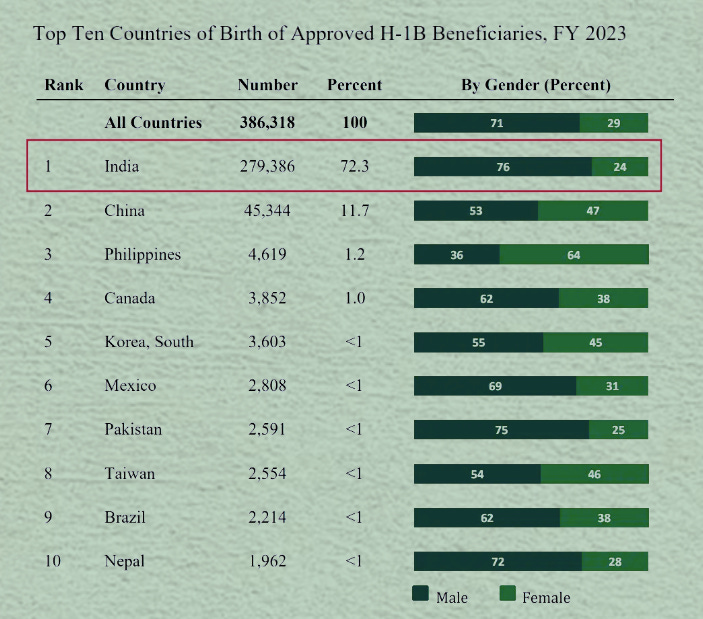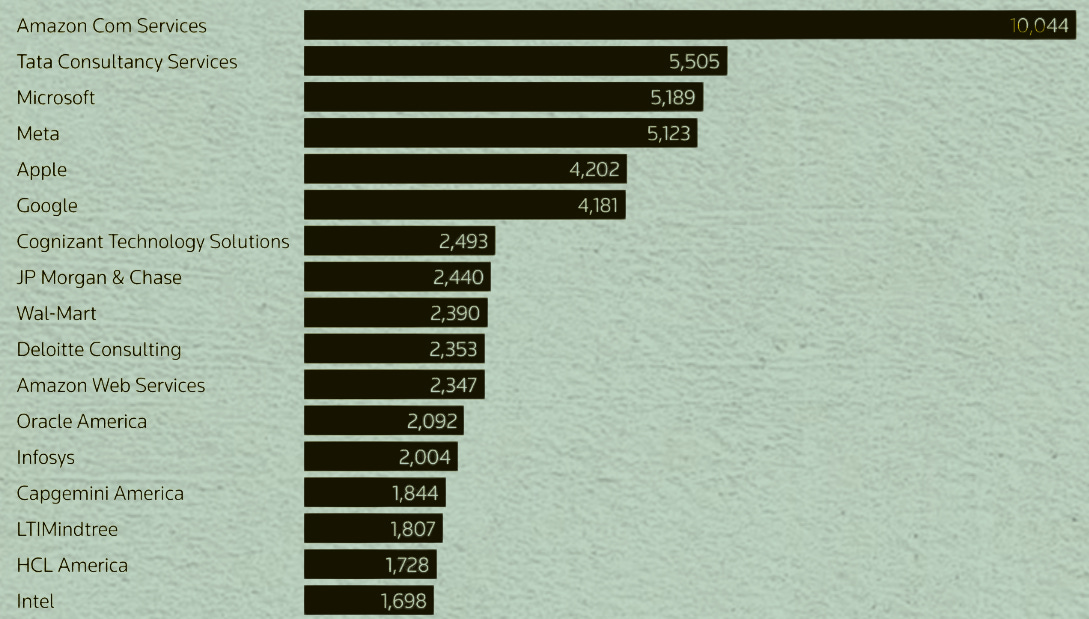H-1B Visa Means No Entry for Indians?
Higher Your Salary, Higher Your Chances to go to America
For decades, the H-1B program has benefited both India and the US. It helped Indian professionals achieve economic success and brought skilled workers into the US to support tech, medicine, and research.
But on 19th September 2025, President Trump announced a massive increase in H-1B visa fees from approximately $2,000-$5,000 to $100,000 per application.
And not just that someone earning a higher salary will have four times more chances of getting the visa than someone with a lower wage.
Let’s see what’s happening?
For Indians, who make up over 70% of H-1B recipients, this massive hike is the bad news, specially for those in sectors like healthcare & tech.
H-1B visa fee is a one-time payment applicable only to new H-1B petitions filed after 12:01 AM Eastern Daylight Time on the day of announcement, and most importantly, it is paid by the employer of the candidate.
The allotment process uses a lottery system when applications exceed the limited 85,000 visa slots available each year. Every March, employers register their workers online, and in April, a random computer-generated selection process picks who gets to apply for the visa.
But after the Trump announcement, only companies that pay the new $100,000 fee can enter the lottery.
The government also wants to replace the random lottery with a weighted system where your salary determines how many lottery entries you get. Under this, applications would receive wage classifications from I to IV, with “higher levels granted increased selection probability”. A Wage Level IV registration would receive four entries in the selection pool, while a Wage Level I registration would receive only one entry.
It means that even after competing intensely for an H-1B visa through years of study and preparation, the proposed new system means your chances aren’t equal to everyone else’s - someone earning a higher salary will have four times better odds in what’s no longer a fair lottery!
Next up, we’re diving into the disastrous Gurgaon rains - what no one else about the 200 cr+ ultra-luxury flats in Gurgaon.
A special take on ethanol prices, some exciting Diwali Mahurat gift and more lined up just for you.
Drop your email ID in the comments to get early access for that extra edge!
For Indian students, who make up a quarter of all international students in the US, this came as a shock as many had already spent large sums on their education. It is highly likely that this hike could lead to fewer Indian students choosing the US in the future.
Moreover, the policy could hurt the US healthcare system, where 5–6% of doctors are Indian H-1B holders. In tech, over 80% of certain computer jobs go to Indian nationals.
Legal challenges are expected, and big tech companies like Google or Amazon might push to be excluded from the fee. Why? Because of their:
High Dependence on Skilled Foreign Talent
High Volume Hiring
Lobbying Power to avoid slow hiring/ delayed projects
Look at the data below, Amazon alone sponsored 10k+ visas for fiscal year 2024, which accounts for approximately 11.8% of the total 85,000 available slots:
Out of all these Visas, Indian nationals received about 70% of all H‑1B visas, followed by China at 14.5%, the Philippines at 1.6%, South Korea at 1%, Mexico at 0.9%, and Nigeria at 0.4%, with the remaining 12% spread across other countries.
Could this policy look more like a test for how US employers will respond, rather than just a tax on foreign workers?
H-1B workers contribute $86 billion to the US economy each year. The way companies and the government respond will decide whether the US remains a top destination for global talent — or if it loses ground to more immigrant-friendly countries.
US hiring is already slowing down, adding just 29,000 jobs/month recently. Economists believe lower immigration is partly to blame, making the timing of this visa change even more risky.
This change may push H-1B visas toward high-paying jobs in highly specialised roles in finance, healthcare, and advanced tech because the $100,000 fee makes it too expensive for many employers to hire H-1B workers, especially in lower-paying fields like education or non-profits, where salaries and budgets are tight.
So, will companies now only use H-1B visas for really important jobs they can’t fill locally?
Many top tech company leaders came to America on these visas - like Microsoft’s CEO Satya Nadella, Google’s CEO Sundar Pichai, and Adobe’s CEO Shantanu Narayen. They all started as H-1B workers and became very successful.
These leaders represent thousands of Indian professionals who started on H-1B visas and contributed significantly to American innovation and job creation. They didn’t just take jobs - they created entire new business divisions, products, and thousands of jobs for American workers.
So all in all, these changes could hurt America as well as India - the US loses talented workers while India loses opportunities for its people to gain global experience.




